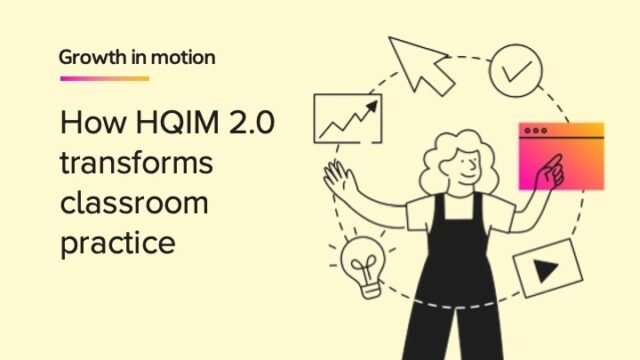
In other articles, we discuss RTI strategies to use for each tier of a response to intervention (RTI) program. But did you know that RTI in education is more than just a set of research-based strategies for dealing with students who need additional help? It’s also an instructional method that can help all your students succeed. So how does it work?
What is Response to Intervention (RTI)?
RTI programs are made up of three tiers. Each tier offers instructional methods and approaches that help teachers support their students.
Tier 1 represents the baseline of support and guidance offered to all students. Tier 1 strategies can be implemented by trained teachers, aides, or paraprofessionals within a regular education setting. Students receive general classroom instruction at this level and do not need additional support to meet grade-level benchmarks for comprehension and proficiency.
Essentially, Tier 1 is high-quality teaching that is sensitive to student needs.
Tier 2 identifies students who may need additional support to achieve academic or behavioral goals, and it offers them the opportunity to receive interventions.
Tier 2 interventions can include:
- Learning strategies
- Study skills training
- Small-group, high-quality instruction with a focus on reading comprehension, writing skills, and math concepts
- Behavior support (e.g., positive reinforcement)
Tier 3 interventions are for students who have demonstrated needs that cannot be met through Tier 2 interventions. For example, if a student’s reading level is two or more years below grade level and they need additional support beyond Tier 2 interventions, then they will likely be placed in Tier 3.
Tier 3 interventions often include one-on-one instruction with a trained aide or the classroom teacher. In addition, these interventions commonly occur outside of general classroom time, whether before or after school or during breaks.
Benefits of RTI
Some of the benefits of RTI include the following:
1. Identify students who need additional help
Students come from many different backgrounds and arrive at school each day in various states of learning readiness. As a result, it can be difficult for teachers to fully understand the needs of individual students, and it is even harder to find the time or resources to adequately support each student’s needs.
RTI can help teachers identify students' needs and offers guidance on how to best address them. With strategies for differentiated and personalized instruction, teachers can tailor their teaching strategies, ensuring that all students get the support they need. By evaluating and supporting all students, you can help them stay on track to reaching their academic goals.
2. Target students' specific academic needs
Sometimes a student just needs targeted, one-on-one help to get back on track. Through regular monitoring and data-driven decision-making, RTI helps educators identify where a student may need additional help and match them with the appropriate level of support. This targeted approach allows instruction to be more focused and effective, ensuring that students receive help that is timely and relevant.
3. Improve student learning outcomes
One of the greatest benefits of using response to intervention (RTI) in the classroom is that it helps students achieve greater success. This can lead to higher engagement and more positive learning outcomes. Early intervention helps catch misconceptions and knowledge gaps before they become increasingly difficult to remedy, increasing the likelihood that students will be able to reach their full potential and accomplish on-grade level achievement.
4. Empower teachers by providing a framework for evaluation and remediation
While there are many ways an RTI approach can support student learning, it also empowers teachers by providing a framework for delivering targeted intervention. It can even boost teacher’s confidence in their teaching skills.
With an RTI approach, teachers are given specific targets to work towards with each student. These targets may be based on various factors, including academic performance, social skills development, or behavior management goals. In addition, teachers may be provided with checklists that help them track progress towards these goals over time, so they know if their students are making progress towards meeting them. This also serves as a source of accountability for both parties involved—teacher and student alike!
The importance of RTI in education
RTI is a powerful tool for teachers in the classroom. It can be helpful to imagine RTI as a three-pronged approach that combines assessment, intervention, and problem-solving. This holistic approach helps identify students who may need additional support with specific academic skills and provides interventions that give them support designed to meet their needs.
RTI strategies can help educators better understand students’ needs, allowing instruction to be tailored accordingly. Implementing these techniques will make learning more enjoyable for everyone involved—including students who need extra attention!
This article was adapted from a blog post initially developed by the education technology company Classcraft, which was acquired by HMH in 2023. The views expressed in this article are those of the author and do not necessarily represent those of HMH.
***
Find more lesson plans and classroom resources on Shaped.
Be the first to read the latest from Shaped.














